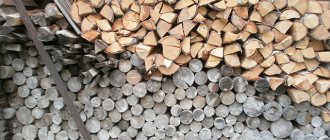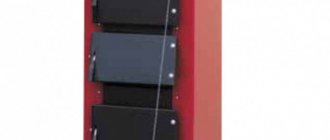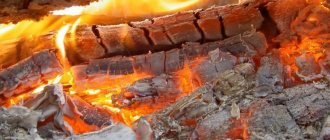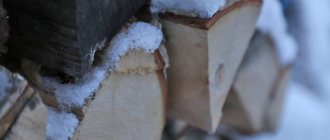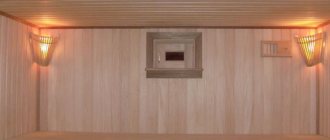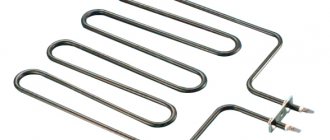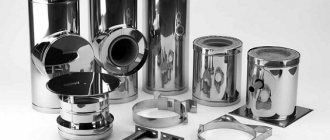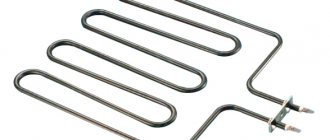To fire a sauna stove and fireplace, you need to choose wood that has good heat transfer and emits a pleasant smell. It is better to give preference to firewood from deciduous trees, since pine and spruce firewood emit acrid smoke when burned, and the resin contained in coniferous wood contributes to the formation of soot in the chimney.
For a sauna stove, you need to choose wood with long burning and high heat transfer. They should not smoke and leave a minimal amount of ash after combustion. The highest quality firewood is obtained from trees cut down in winter, when sap flow in the trunks stops. Firewood must be dry.
Photos of our baths Photos of our saunas Find out the cost
Spruce
Many woodworkers wrinkle their noses at the mention of spruce because its heat output is usually low and it burns to ashes without leaving any embers.
But this variety of trees still occupies its niche among wood suitable for use as firewood. Spruce burns easily and produces heat quickly, so it is excellent if you need to quickly warm up a cold house. In addition, thanks to its structure, it is easier to chop spruce into small chips, and no supply of firewood would be complete without spruce chips for ignition. So-called firewood for baking in special ovens is often made from finely chopped spruce (or aspen) precisely because such firewood burns quickly and evenly. By adding small amounts of spruce wood frequently, every three to five minutes, you can maintain complete control over the heat. Previously, spruce firewood was called kitchen firewood, but birch firewood was called firewood for the living room.
According to the old Norwegian tradition, the fireplace was heated with spruce wood at Christmas. The Christmas bundle - a small woodpile that was specially prepared for Christmas and kept inside the house - was traditionally made from spruce logs. Many made it from damp wood for the sake of the smell and did not burn it with this wood until Easter.
Spruce has a fairly dense internal structure. This makes the wood crackle and bounce as the resin pockets explode in the fire. Therefore, it is better to use them in a stove or fireplace with a glass door. Many people like this crackling sound - it gives a feeling of life in the fireplace.
Due to the great demand for birch firewood, loggers often sell spruce firewood quite cheaply. The difference in price turns out to be much higher than the difference in heat output. On average, the density of spruce is 380 kilograms per cubic meter, possible variations are from 300 to 600 kilograms. Late spruce is heavy and full of energy.
Aspen for cough
Aspen tree helps to cope with severe dry cough due to pneumonia, flu and bronchitis. But it is also effective for prolonged chronic cough with an abundance of sputum.
Plant materials are used to prepare infusions, which must be consumed warm. You can also use the powder obtained from aspen catkins to make cough syrups and lozenges. Syrup recipe:
- boil 3 tablespoons of earrings in 150 ml of water;
- strain;
- add 3 tablespoons of sugar and the juice of half a lemon to the resulting broth;
- boil for 5-7 minutes.
The syrup can be used 3-4 times a day, 1 teaspoon for 4-5 days. You can simply steam aspen catkins with boiling water and drink 50 ml of liquid 4-5 times a day.
Arthritis and rheumatism
Aspen has the ability to relieve joint pain and bring relief from exacerbation of rheumatism and arthritis. In order to use the plant in the treatment of such diseases, you need to prepare a vodka tincture and ointment.
- For vodka tincture you need to take 30 grams of dry buds and the same amount of dry tree bark. The raw materials must be kept for 2 weeks in 500 ml of vodka, strained and used for daily compresses every evening.
- The ointment can be prepared on the buds or on the bark - collect, dry, boil 3 tablespoons of bark or buds in 300 g of fat, strain and pour into a clean jar.
Aspen ointment can cause a warming effect. It can be applied after an evening half-hour compress with vodka. Before using these products, be sure to make sure there is no allergic reaction.
Prostatitis
Aspen bark is one of the most popular types of plant materials used in the treatment of prostatitis. A decoction or infusion is prepared from it. Or alcohol tincture for oral administration. When using products based on aspen bark, the following therapeutic effects are observed:
- elimination of inflammation;
- normalization of urination;
- reducing the severity of pain;
- restoration of reproductive function.
Aspen contains plant compounds that can restore organs and tissues of the genitourinary system in men. But it is important to monitor the results during treatment in order to adjust the course in time.
Which ones are best for the oven?
Any wood can be used as fuel. The main thing is that they exist. Each region has its own preferences, depending on what trees grow in the area. Many people believe that birch or alder are the best. The choice is yours.
To the bathhouse
The choice of logs for heating a sauna depends on the design of the stove. Many people prefer:
- Alder. They produce a persistent heat and burn almost smokelessly. There is a popular belief about their healing power;
- Birch. Burns evenly, the heat is strong;
- Willows. The heat transfer is low, you will need a lot of them, but the spirit in the bathhouse will be especially light.
It is not recommended to use oak ones - they take a long time to burn out, the heat is intense, and they emit a large amount of carbon monoxide. Periodically, aspen is used to clean the chimney. If the furnace firebox is remote, the main selection criterion is heat transfer.
For home heating
Hardwood firewood has the best qualities and is used more often. Birch, oak, linden - any, depending on their availability and needs. The main thing is to be dry. In fireplaces it is better to use those types that smoke less and do not “shoot”.
Heating with wood can be caused either by necessity - due to the lack of another type of fuel, or by personal desire. Logs burning in the oven create an unsurpassed atmosphere of warmth and comfort, emit a lot of heat, and for the most part provide a healing effect.
Aspen description
Aspen is a deciduous tree with a large spreading crown. It can reach a height of 35 meters, but specimens of 20-25 meters are more common. The bark of the plant is light, grayish-marble in color. The roots of aspen are very developed, deepening to 4-5 meters.
The tree is abundantly leafy, the leaves are large, almost heart-shaped on petioles with edges. Aspen blooms with earrings that differ in color. Red ones are masculine, and greenish ones are feminine. After flowering, small boxes with puffs are formed.
Aspen is distributed throughout the Russian Federation and can often be found in forests, gardens, and parks. This plant is cultivated to create shade on the site, as well as to obtain medicinal raw materials.
In ancient times, it was believed that aspen had a magical ability to scare away evil spirits, so it was planted along city walls, at the entrances to courtyards and houses.
Subtleties and nuances
- The worst thing is if you have damp aspen firewood. This type of wood produces a small amount of heat, so aspen firewood will be very difficult to light. The logs will slowly smolder when exposed to temperature, releasing very little heat.
- A good option for quickly kindling raw logs is birch or spruce. Despite the fact that these tree species emit a lot of soot and soot when burned, they are optimal for quick kindling. The fire catches on the chips and birch bark in literally a matter of seconds.
- An original way to quickly dry wood was invented by our ancestors. Salt should be poured in large quantities onto wet firewood. The salt will draw out some of the moisture, and the firewood will become usable.
- If we light a fire in nature and we have flammable liquids in our arsenal, for example, diesel fuel, gasoline, kerosene, then it is quite possible to pour these compounds on the wood chips. If we want to use flammable liquids in the stove, we can moisten a rag with them and place it between the logs. The characteristic odor from such liquids will disappear fairly quickly after lighting a fire.
- Some experts recommend putting an empty bottle of vegetable oil in the firebox. With its help you can quickly get the required amount of fire.
Please note that firewood is always purchased raw. It is best to do this in winter, stocking up for the next season, when equipment easily enters the forest. In this case, you will have the firewood for a whole year before using it. They must be stored in a woodpile, protected from precipitation and blown by the wind.
As you can see, there are no particular difficulties with kindling raw firewood; the main thing is to approach this issue thoughtfully and carry out the preparatory work efficiently. With a little patience, you will have a nice, intense fire that provides warmth.
Hypertension
It is quite possible to get rid of high blood pressure with the help of aspen, because this plant produces the following therapeutic effects:
- eliminates excess cholesterol;
- relaxes the walls of blood vessels;
- normalizes the functioning of the heart and strengthens its muscles.
During attacks, you need to drink an infusion of aspen catkins, prepared according to the classic recipe in a volume of 100 ml. To prevent attacks, it is recommended to periodically undergo a monthly course of treatment 2 times a year - drink an infusion of 50 ml 3 times a day.
Aspen with acute respiratory infections
Aspen helps with flu and colds no worse than antiviral drugs. Tea is used for treatment. It should be drunk 4-6 times a day with honey. You can make tea from twigs, leaves or earrings.
To enhance the effect, it is recommended to wait until the tea has cooled to 60 degrees and add 1 teaspoon of honey to the serving. Aspen has a pronounced antiviral, antibacterial, anti-inflammatory and antipyretic effect.
Wood Density
Of course, in a pinch, any kind of firewood is suitable, including that obtained from a broken wooden box. But if we are talking about constant heating, then it is better to choose wood species characterized by the highest heat transfer. The heat transfer coefficient depends on several factors, including the density of the material.
Hardwoods are the same ones that are widely used in construction and decoration: oak, birch, beech. The greatest heat transfer is characteristic of oak, but since oak belongs to the category of valuable wood species, it is rarely used as fuel
It is worth paying attention to birch trees: birch produces 18% more heat than pine, and 25% more heat than aspen. This is ideal for the oven
- Medium-hard - these include coniferous species - spruce, pine, larch, and fruit tree species - apple, pear. Logs made from them provide less heat, but flare up quickly and spread a wonderful aroma.
- Soft ones - alder, aspen, are characterized by low heat transfer, but, due to the low moisture content, they burn with almost no soot formation. Such firewood is perfect for a fireplace, since the latter often serves as a decorative element rather than as an actual source of heat, like a stove.
It is no secret that logs made from freshly cut wood, regardless of the type, burn poorly: they do not flare up for a long time, produce less heat, smoke, and so on. In order for the combustion process to provide maximum heat, the wood must be well dried. The moisture content should not exceed more than 15-20%
To determine the degree of dryness, you can conduct a sound test: if a ringing sound is heard when two logs collide, then the firewood is ready for use.
Which firewood to buy for the stove, and which for a delicious barbecue? on Supersadovnik.ru
Firewood is also different! Our ancestors knew this simple truth well. It is not in the Russian tradition to go for brushwood, this is from European fairy tales.
Russians always went by cart in the summer and by sleigh in the winter to cut down forests. Our winters are cold and we don’t have firewood for heating.
Firewood was stacked by species, always separating coniferous, birch, aspen and fruit. But why did they do this? What difference does it make what you burn?
And yet, there is a difference. All types of wood are divided into three main types: hard, medium and soft.
Firewood with hardwood
Solid wood has maximum heat transfer. Once upon a time, a piece of mahogany came to our dacha. It was impossible to process it, and it was too small for useful use, so they threw it into the fireplace.
This piece burned almost like coal, for a very long time. But these are all dreams; heating with mahogany is VERY, VERY, well, VERY expensive and therefore simply unrealistic.
Unfortunately, most of our hard rocks are not used for heating, and even if they are, not everyone can afford such heating.
Hardwoods from the middle zone: oak, beech, hazel, ash and fruit wood: apple, pear.
Oak firewood
They prick and flare up hard. They burn long and well, with a pleasant aroma, the coals smolder for a long time.
It is best to use middle-aged oaks: young oaks produce less heat, and old ones often have an unpleasant aroma.
oak firewood
Beech firewood
They prick and flare up hard. BUT, they burn even when raw.
Professional summer residents consider oak and beech logs to be the best firewood. BUT THE PRICE!!! 5 kg of oak firewood costs approximately 130-150 rubles, a bag of 45-50 kg - 400 rubles, a cube of firewood - 2300-3000 rubles. There will be just golden firewood.
Ash firewood
They stick well and light up for a long time. They also burn raw.
Firewood from hazel / hazel
The same properties as ash firewood.
“Fruit” firewood from apple and pear trees
They prick and light up well. They have a pleasant aroma. Summer residents especially recommend the apple tree: there is a lot of heat, a minimum of smoke.
Of course, all these rocks are used extremely rarely for heating. Cutting these rocks yourself means getting a considerable fine; this is illegal. You can buy it, but it will be very expensive. The only available option is an apple or pear tree.
In every household they periodically appear in the woodshed. But as constant firewood, it’s better not to count on them. And if you cut down an old apple tree, then leave its logs for the smokehouse.
Fish smoked on fruit chips is incredibly tasty.
fruit firewood - from apple trees
Firewood with medium hard wood
The heat transfer of such firewood is lower than that of the first group. But they are more accessible and inject well. Medium-hard woods include: cherry, birch, elm, cedar, fir.
Cherry firewood
They prick easily and burn with a pleasant aroma. Suitable for smokehouse.
Elm firewood
It’s better to discard these immediately: they burn poorly, there’s a lot of smoke, and they’re hard to inject.
Fir firewood
Can only be purchased in the Far East. You won't find this firewood anywhere else.
They prick easily, and when burning they produce a lot of smoke and sparks. It is better not to use for fireplaces and barbecues.
Cedar firewood
Also available only to residents of the Far East.
They cut hard and prick well. The coals smolder for a long time.
Birch firewood
The most popular firewood in the middle zone. Every second person orders them! Why?
Well, first of all, they are affordable. As a rule, you can only buy two types of firewood from us: coniferous (spruce and pine) and birch, or order a car that will contain birch and coniferous firewood.
Secondly, birch firewood belongs to the second group, which means that it burns for a long time and produces quite a lot of heat. After burning, it forms coals that give a good and long heat, which is why they are traditionally used for barbecues. There are not many sparks and you can calmly warm yourself by the fireplace or barbecue, in which birch logs are burning.
So, the advantages of birch firewood: they split well, ignite, give a fairly high temperature and have few sparks. BUT, they also produce a lot of soot, clogging the chimney. And here... aspen will help you!
birch firewood
Firewood with soft wood
Such firewood burns quickly with little heat transfer and produces little coal. But they light up quickly. The most commonly used are pine and spruce, but these types of wood also include: poplar with aspen, alder and linden.
Linden firewood
They prick well, but do not light up well. When burning they are fragrant.
Alder firewood
It's hard to prick, but it burns well, smells nice and lasts a long time. Leaves a minimum of soot.
Poplar firewood
They prick well, they cut badly. They burn well, but there are a lot of sparks.
Coniferous firewood
The most popular after birch! As a rule, mixed, consisting of pine and spruce.
They are easy to saw, easy to prick, light well, smoke moderately.
By the way, spruce is softer than pine, so pine gives a little more warmth and heat.
Pine log
Aspen firewood
Valued for its ability to clean chimneys. To do this, at the end of heating the house, a couple of aspen logs are thrown into the firebox.
aspen firewood
What to do if you received wet firewood?
Wet wood burns poorly, does not produce enough heat and smokes heavily. How to save the situation?
First, you need to saw and split the wood. This is done if you were brought uncut firewood. However, to save your own back, it is better to order chopped firewood, although with this option it is easier to deceive the summer resident.
It is more difficult to calculate the volume of firewood in a pile, and once it is stacked in a woodpile, it is almost impossible to get back the money or the missing half-cube of firewood. Therefore, experienced summer residents, in order not to get upset, as a rule, immediately budget for the shortage of firewood.
And if the firewood is delivered exactly as promised, then this is always a pleasant bonus.
So, back to our problem.
1. Chop.
2. Place the entire stock in a dry place. If stored outdoors, cover the top with a waterproof material: film, iron, plastic. Birch firewood dries in a woodpile for about 3 months. Pine needles take a little longer to dry than birch.
3. Dry in parts in the house or in a bathhouse near the stove.
Then dry in parts. While you are heating the stove, bring in and place the logs not far from the stove. To speed up drying, stack the logs on top of each other, alternating rows with logs laid lengthwise and logs laid across. This will provide ventilation between them and speed up the process.
wood by the fireplace
How to light a stove with raw wood?
So, they brought you raw firewood, but there is absolutely no dry firewood for kindling and first drying. What to do?
First, use lighter fluid in the house only as a last resort. They leave an unpleasant, persistent smell for a long time and using them is simply dangerous if you have little experience.
It’s better to cut thin splinters from the driest pine log you can find. First burn the stove with paper, this will warm it up a little, and then light it with paper and torches. Place the paper in a crumpled form, with the torches arranged like a house. Gradually add splinters of larger and larger diameter, then logs.
lighting the stove
The real problem may arise if you have a clogged chimney, but that's another story. In a cold oven, aspen will not help matters. Therefore, it is better to do everything in advance and clean the chimney on time: with aspen (at the end of each fire) or with a special means for removing soot, for example Chimney Sweep or Cheerful Chimney Sweep.
Source: https://www.supersadovnik.ru/text/kakie-drova-samye-luchshie-berezovye-hvojnye-olhovye-ili-ot-fruktovyh-derevev-1008622
Birch
This is the queen of the Norwegian forests. Birch has a deservedly high rank in Norway, so high that other good varieties of trees are found in the shade and many prefer it alone.
Nevertheless, the status of the national firewood tree has a good justification: there is a lot of birch (it makes up 74% of all deciduous trees), and it grows large and even. The exception is mountain birch, which can be tortuous and difficult to fit into small ovens. But birch, growing in valleys and lowlands, if the trees are dense, forms a long trunk without branches.
From a processing point of view, birch is a lumberjack's dream compared to spruce and pine. The branches are thin, the leaves do not stick to gloves and tools like needles. In the stove, birch firewood behaves incomparably. Their combustion coefficient is high, they do not throw sparks into the room and turn into bright embers. In addition to this, birch bark ignites easily and helps with ignition.
But birch also has its own requirements: it needs to be well dried and quickly deteriorates if it is attacked by fungus and mold. If an undried birch tree is left lying on the ground, it will quickly rot.
Birch grows most actively until 50 years old and rarely lives more than 200 years. Downy birch can grow up to 20 meters, silver birch - up to 30 meters. The average density of wood is 500 kilograms of dry raw materials per cubic meter.
The healing properties of aspen
Aspen is used not only in alternative medicine. Quite often it is also used in general complex treatment regimens, as an auxiliary, restorative and supportive agent.
The tree is so popular for one simple reason - it has numerous medicinal properties. A list of the therapeutic benefits of aspen bark, leaves and catkins is below.
- The collection eliminates inflammation, both when used externally and internally.
- Thanks to the content of antioxidants, vitamins and flavonoids, the plant strengthens the immune system and helps to quickly cope with bacterial and viral infections.
- Aspen has a pronounced diuretic effect, and due to the content of organic acids it helps with urolithiasis. Together with the antibacterial and anti-inflammatory effect, this property is used in the treatment of diseases of the urinary system.
- Aspen bark has a beneficial effect on the gallbladder and liver, stimulates cell restoration, and helps more actively process toxins and fats. Indicated for use in cases of congestion, cholecystitis, cholelithiasis, and hepatitis.
- The plant strengthens the heart, helps quickly cleanse blood vessels of cholesterol, tones their walls and increases elasticity.
- The plant has a mild laxative effect, restores microflora and intestinal motility.
- Aspen helps cope with a lingering cough. It eliminates its causes - inflammation in the respiratory tract and infections.
- Aspen is a popular anthelmintic that copes with various types of parasites without harm to health.
- The bark of the plant helps reduce sugar levels and regulate metabolic processes in diabetes mellitus.
- Using herbal medicine can reduce high blood pressure and normalize well-being in case of hypertension.
Thanks to the use of aspen-based products, you can generally improve your health, increase your resistance, and improve your well-being. Tea based on plant raw materials replenishes the deficiency of minerals, vitamins and antioxidants, adds vigor and strength.
Firewood for saunas from deciduous trees
Deciduous wood is more often used to fire a bathhouse than coniferous firewood. Ash, alder, birch, and fruit trees are suitable for these purposes.
Let's look at the brief characteristics of firewood from several species of deciduous trees:
Aspen firewood is not very suitable for heating a bathhouse, since it is difficult to ignite, but burns quickly and produces little heat. Aspen firewood produces a long flame without soot, so they are used mainly for cleaning soot from chimneys. An additional component that increases cleaning efficiency is potato peel. When burned together, aspen firewood and potato peelings loosen dense soot, which leaves the chimney due to draft.
- Alder, numbering more than a dozen species, was used in Rus' to heat baths for the nobility. Such firewood is easy to dry without even creating special conditions for it. The main thing is that the logs were prepared from wood that grew on not very wet soil. Alder firewood does not lose its natural aroma for a long time. The advantages of alder firewood are rapid combustion, a large amount of heat, and no smoke due to the low resin content. The aroma of alder has a beneficial effect on health, helping to overcome colds, depression and fatigue. Like aspen, alder firewood is used to clean soot from chimneys. Alder firewood is considered an excellent option for cooking barbecue. You can read more about this in the article “Features of choosing firewood for barbecue.”
- Linden firewood is slow to ignite but produces an effective, lasting heat. The steam from the linden tree is considered healing, especially if you add honey to the oven and smear it on the patient’s body. This firewood is considered the best for a bathhouse, but has one drawback - it can be stored for no more than two years.
- High-quality oak firewood, selected from middle-aged trees, is considered a prestigious type of fuel. The steam from oak logs is tart, smells like forest and helps against some chronic diseases; it is recommended for maintaining the health of children. Oak wood is ideal for burning fireplaces.
- Birch firewood has antibacterial properties. The steam in a bathhouse, heated with birch firewood no older than two years, is light, aromatic, good for the respiratory system, and helps fight colds.
Birch wood is hard, and in terms of heat transfer it is second only to oak, significantly surpassing aspen and pine. To get rid of soot clogging the pipe, aspen logs are added to the stove after burning with birch firewood.
- Willow is an affordable, rapidly renewable wood. It burns hot, burns out quickly, does not smoke, and requires significant supplies.
- Wood from fruit trees - cherries, pears, apple trees, plums - is a fairly common option for heating a bathhouse. Such firewood is fragrant, burns hot and smokeless, especially apple wood. Essential oils are used to enhance and change the aroma. If you can use old fruit trees with rotten cores to heat a house, then this option is not suitable for a bathhouse.
After choosing the type of wood and cutting the logs, you need to take care of their proper drying and subsequent storage. To do this, set up a woodpile in the open air or in a shed near the bathhouse. Firewood is laid upside down and not directly on the ground, but on a stand made of beams and poles. You can read more about the methods and features of drying lumber and firewood in the article “How to dry wood correctly.”
Aspen chemical composition
In different parts of the plant, the concentration of active components differs slightly, but the chemical composition is the same. It is the presence of valuable chemicals that determines the medicinal properties of the plant. Therefore, it is important to know exactly what substances nature has combined in this plant in order to use them correctly. Aspen contains the following components:
- essential oils;
- tannins;
- polysaccharides;
- carotenoids;
- flavonoids;
- antioxidants;
- glycosides;
- organic acids;
- coumarins;
- vitamins (A, C, group B, E, K, PP);
- mineral compounds and salts.
Thanks to its rich composition, the plant has a beneficial effect on the nervous and cardiovascular systems. Aspen bark and leaves are used to treat diseases of internal organs, indigestion, and disorders of the liver and kidneys.
Primary requirements
The best firewood for heating stoves is dry. Humidity should be within 20%. This is the main requirement. The calorific value of wood depends very much on its moisture content.
Dry wood flares up and burns well, emits more heat, and smokes less. The logs should not be rotten or saturated with water. Water logs are not suitable for heating stoves.
Good firewood leaves little ash. It is advisable to harvest wood in late autumn or winter, when sap flow stops and the wood is denser.
The size of firewood for the stove depends on the size of the firebox, usually 35-40 centimeters long. The thickness is medium, thick logs split. Small logs are easy to light. They also burn quickly, which must be taken into account when preparing them.
Important component 3 - the correct combustion algorithm
We place two logs parallel to each other on the grate at a distance of 10-15 cm. Between them is a crumpled sheet of paper, which we cover with wood chips or shavings. The “seed” is completed by two more logs laid diagonally on top.
We set fire to the “seed”
Using a match or kitchen lighter, light the wad of paper in the “seed”. You cannot use flammable liquids to speed up ignition: gasoline, diesel fuel, kerosene, xylene, acetone, etc. If the firewood is damp and cannot be ignited, you can use a dry alcohol tablet. We wait for the characteristic flame noise to appear in the stove, close the firebox door and cover the vent (not completely).
Throwing wood into the stove
The “seed”, of course, will not be enough to light the stove. Therefore, to continue combustion, you will have to add firewood from time to time. The first time this is done 10-15 minutes after igniting the “seed”. We open the firebox door, level with a poker everything that remains of the “seed” and place the firewood in approximately 2/3 of the volume of the stove firebox.
In the future, a new portion of firewood is laid when the old one burns out - approximately once every 1-1.5 hours.
We complete the heating of the bathhouse
In winter, the sauna is heated for at least 5-6 hours, in summer it is faster - on average 3-4 hours. When the bath has heated to the required temperature, the firebox can be finished. We wait for the last portion of firewood to burn out, open the firebox door and check for bluish flames above the coals - signs of the presence of carbon monoxide. If everything is in order, close the vent, smoke valve and firebox completely.
After everything has been done, we open the doors of the steam room and the window so that the bathhouse can be ventilated. 15 minutes is enough for the bathhouse to be filled with fresh air. After that, close everything except the window. The bath should last for about two hours. Don’t be afraid, during this time it will not have time to cool, but the heat will become soft, uniform, and the steam will become light. Afterwards we close the window and begin the bath procedures.
There are three answers to this question: from a practical, health-improving and economically beneficial point of view.
- The first insists that hard types of wood should be used for a bathhouse, since they burn longer and produce more heat.
- The second states: it is preferable to take “healing” logs that have the most positive effect on the body.
- The third speaks about the advisability of using only firewood for heating that is obtained directly on site and, therefore, is inexpensive.
This is important to know!
Regardless of the type of trees that will be used for firewood, you need to know about some features:
- Deadlines. Of course, those logs that have already served their “allotted” time will also burn (provided that they are dry and there is no mold on them). However, most trees retain their aroma only for two years. Alder and aspen are a pleasant exception in this regard - 3 years.
- Everything has its time. In winter, the humidity of trees is at a minimum level. In this regard, the preparation of firewood must be done during this period. Drying usually takes about 12 months. However, the timing depends on the type of forest, harvesting time, storage conditions and a number of other factors. In this case, the duration may increase significantly or, conversely, decrease.
- Dimensions. Which firewood is more profitable? Of course, those with optimal sizes. And these are 40-50 cm in length and 8-10 cm in thickness. This is how they are convenient to store and are suitable for any firebox.
- Rot. Under no circumstances should you use rotten firewood. Keeping logs on the ground for a long time results in the accumulation of toxic substances released during combustion, which is not beneficial to humans. For this reason, when cutting down branches, you should immediately take the correct measures to store them. When choosing raw materials for heating among dead wood, you should not take into account long-fallen branches.
- Storage issues. Logs should be laid with the bark facing up. This will protect the firewood from accidentally entering moisture, which evaporates faster from the surface of the bark. And if you show your imagination, you can build an original woodpile to the delight and surprise of your guests.
As can be seen from this material, it is not enough to know which firewood is best for the stove. It is equally important to ensure that they are stored correctly.
Regarding the arrangement of a woodpile, you can always come up with a lot of different ideas: from the most creative and crazy to the simplest to implement.
How logs are stored
To ensure reliable storage of firewood, it must be stored correctly. The future warmth in the house depends on this. The storage area is protected from rain and snow falling on the woodpile. Fuel preparations do not need direct sunlight.
After the logs are sawed and chopped, they are left for some time in bulk in a place that is well ventilated and where the sun penetrates.
If the wood was harvested in winter, the cutting is done in the spring, so that there is time for drying and ventilation in the summer. But logs should be placed in the woodshed only at the end of summer or with the onset of autumn. When a separate shed is not provided for firewood, a base is made for the woodpile from trellises - pipes or even tree trunks of medium thickness.
The first row of logs is folded so that their ends rest on the trellises and are slightly raised above the ground. Each next row is laid at a slight angle to the previous row. You will also need vertical supports to strengthen the woodpile.
The outermost vertical rows of logs are folded alternately lengthwise and crosswise.
If there is no canopy, you need to build any shelter from the sun and rain. It can be sheet iron or slate. Sometimes they use good quality cellophane film that will withstand wind and temperature changes.
A very convenient way to store firewood for a long time is to install a woodpile in stacks.
Installation recommendations
For a heavy brick oven, it is necessary to build a foundation.
During the installation of a heating device, several rules must be followed:
- Do not place flammable objects or explosive liquids near the heated area.
- It is better to clean the collapsible type of chimney from soot.
- The suitable diameter of the chimney pipe is approximately 15 cm, length – 5 cm.
- The chimney is equipped with an adjustable damper.
- To protect against burns, it is better to use brick shielding. The masonry will also prevent overheating of the walls and will accumulate heat.
- The floor surface made of combustible materials is protected by the foundation.
The complete instructions contain detailed installation instructions.
Characteristics of firewood
In order to choose the right type of wood for the firebox, you need to know some of its characteristics. Firewood is distinguished by heat transfer, flammability, ash content and the amount of smoke it produces when burning.
High-quality firewood is distinguished by good combustibility and heat transfer, the ability to produce a minimal amount of ash and avoid excessive smoke. To choose exactly these, you need to pay attention not only to the type of wood, but also to its dryness, since it must contain a certain percentage of moisture. Everyone knows that logs cut from a freshly cut tree will burn poorly due to excess moisture in them. Therefore, the preparation of firewood, and wood for outbuildings, furniture making and other needs, is usually carried out in the middle of the winter period. At this time, the trees “sleep”, and their trunks do not have such intense sap flow as, for example, in spring or summer.
Results
The quality of heating the room directly depends on how correctly the firewood is stacked, how it is stored, and when it is harvested.
You need to know what kind of wood is best to burn the stove with. The heat transfer of different tree species is different, you need to remember this.
When choosing firewood, you need to know the degree of its ash content. The more waste remains from the logs, the lower the efficiency. And this is not economical. A lot of smoke is not a sign that the firewood provides good heat transfer. The only thing that can be said for sure about such firewood is that they clog the smoke exhaust channels.
Oak logs have the highest efficiency; linden and birch have especially healing properties. Willow and poplar are taken as a last resort. Coniferous trees clog chimneys. If you need to clean chimney ducts, aspen and alder will help.
An aesthetically pleasing woodpile will give an ordinary garden plot a creative look. You need to stack the woodpile slowly and carefully, ensuring the stability of the structure, good ventilation of the wood and a neat appearance.
Willow (willow)
It grows en masse along river banks, just like alder - it can be considered fishing fuel. True, in terms of heat transfer it is noticeably worse. It burns out quickly and is only suitable for short-term temporary fires, for example, for producing boiling water or preparing small amounts of food.
- Fire power: 0.56de.
- Calorific value: 2139 kWh/m³.
- Combustion temperature: 480 °C.
- Burning time: short.
- Flame: smooth, with a slight haze, can sometimes spark or shoot.
- Coals: formed in small quantities, burn out quickly.
- Lighting difficulty: easy.
Fruit trees for flavor
Of course, no one will specifically grow fruit trees for the sole purpose of using them for firewood. However, there is still an apple, pear, plum or cherry tree on the site. Over time, you can collect a lot of branches and twigs, which you can put into the firebox. Some people make fires right away, but it would be much more correct to carefully cut them and put them in a woodpile.
It costs nothing to saw and chop firewood; the apple tree is the leader in terms of heat release, and there is practically no smoke. But this choice is more of an aesthetic nature.
Firewood from fruit trees
Such firewood is suitable for heating a house, but the wood of old trees is used for this, as well as for a bathhouse or fireplace. They burn well, have a light aroma, and do not produce strong burning when burned. This wood is often used for smoking meat and fish, as well as for making barbecues and kebabs.
Folk tales
Superstitions and beliefs circulate among the people. For example, it is believed that it is better to prepare firewood for a bath during the waning moon. Moreover, the thinner the sickle, the stronger the logs are endowed with healing powers. Once upon a time, the Slavs believed that people who left the world turned into maples in their lives. The appearance of its leaves is akin to open palms, and its branches represent hands raised to the heavens. For this reason, they never fired maple stoves.
In the old days, residents of the Tambov province heated their stoves exclusively with apple trees to keep the house warm throughout the winter, including especially frosty days. Whether to believe all this or not is everyone’s business, but what happened was what happened. What do you, dear readers, think: what kind of firewood is better for a stove, bathhouse or fireplace?

